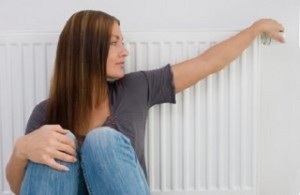From Guest Blogger Joel Smith: How District Heating and Cooling Systems Can Help Keep the Environment Green

The good news is, things are changing, slowly but surely. Governments are finally being more proactive in tackling these issues and consumers are more willing to change their ways.
But we are nowhere close to solving the issue yet and one of the biggest hurdles is our current methods for heating and cooling homes.
Air conditioners and radiators used in almost every home in the country are absolutely essential, but are also responsible for increasing our annual greenhouse gas emissions. We can’t live without appropriate climate control, for sure, but we may be able to drive up the efficiency of our heating and cooling systems.
The answer could be a district heating and cooling system. The concept is straightforward and the results astonishing. Instead of having an air conditioner or radiator installed in every home, a central energy center supplies what is needed for every home and office in a particular area. The energy generation is centralized and all the surrounding buildings can benefit from the energy production whenever needed.
The system is very similar to the way water is delivered to apartments and offices now. The central department supplies all the residents of a particular area.
The most enticing aspect of district heating and cooling systems is that it is an environmentally friendly solution. Water is heated to very high temperatures in a central plant and a network of pipes carry the water throughout a particular neighborhood. Every home’s heating system is connected to the one right next to it, creating a heating network unlike any other.
The creation of heat is the most energy intensive aspect, and since it is centralized the heat can be used by homes whenever they need as they are all connected to a central pool. This means the heating is more efficient and much less destructive to the environment.
The district heating and cooling scheme is widely considered by experts to be the cheapest solution to our global climate issues. In fact, Denmark has even developed plants for central heating and cooling as part of their renewable energy efforts.
The effects are amplified when the district heating and cooling system is connected to a source of renewable energy. Geothermal energy, for example, is widely used in the United States to heat the water used a scheme like this. Some areas of Germany, Denmark and Canada have been able to use solar energy to heat the water needed for a district heating and cooling scheme.
District heating is considered to be the cheapest way to reduce a home’s carbon footprint. Similarly, District cooling systems use chilled water through a network of pipes in an area to cool homes and office. This system has already been tried in areas such as UAE, India and Finland.

District heating is nothing new and may be a good idea. However, I take issue with the following statement from the article:
“The district heating and cooling scheme is widely considered by experts to be the cheapest solution to our global climate issues.”
No it isn’t! If we eliminated CO2 emissions caused by heating and cooling we would still have a CO2 emissions problem. It may well be a significant PART of the solution, but no more than part of the solution.